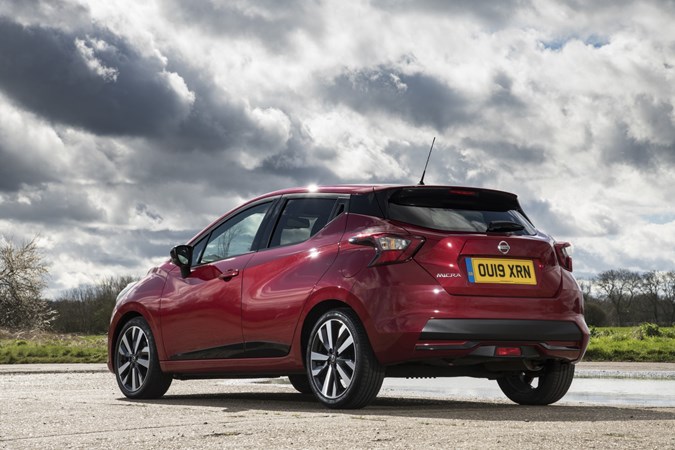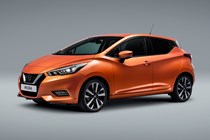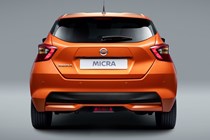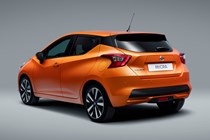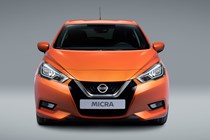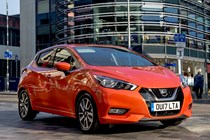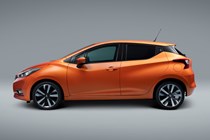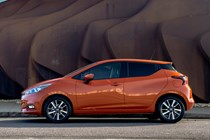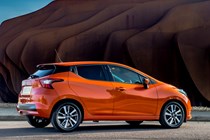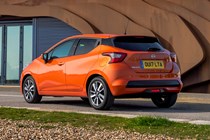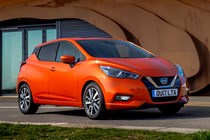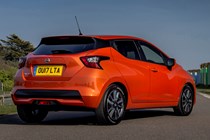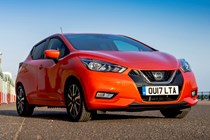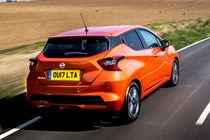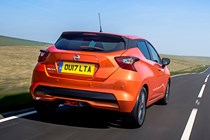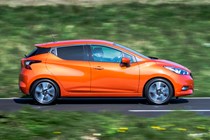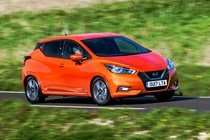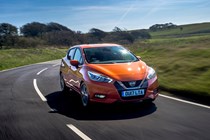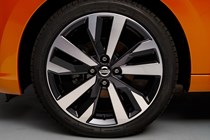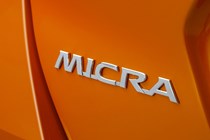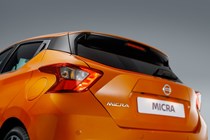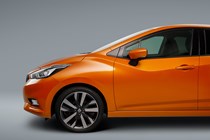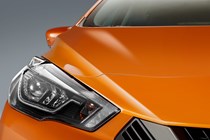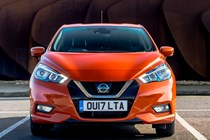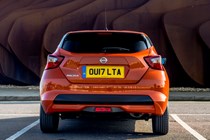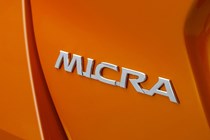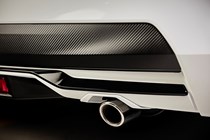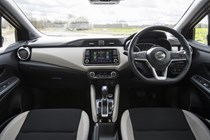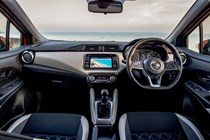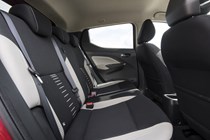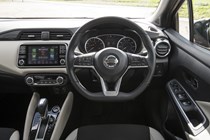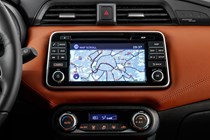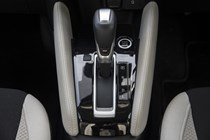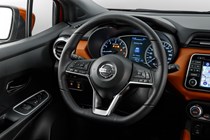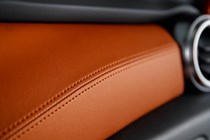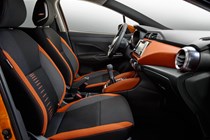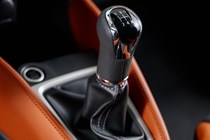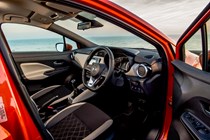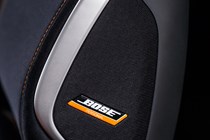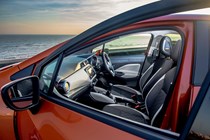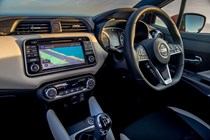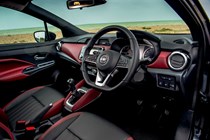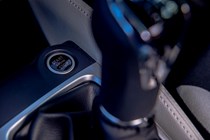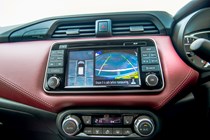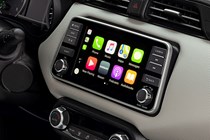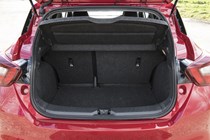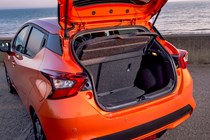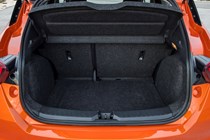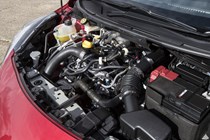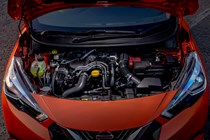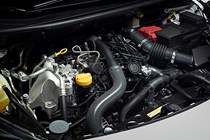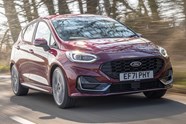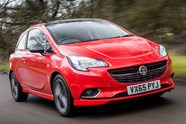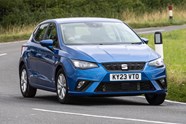
Nissan Micra Hatchback (2017-2022) verdict
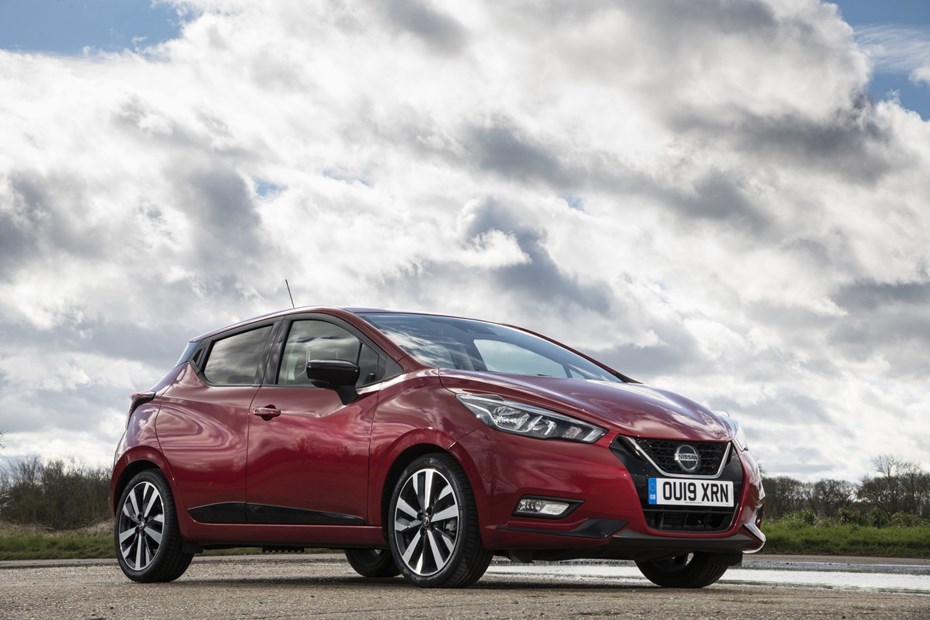
Should you buy one?
The Nissan Micra has come of age: it’s a small car we’d heartily recommend and should provide stylish, no-nonsense fun for those wanting a city runabout or versatile small car. Do compare finance costs however, as Nissan’s PCP finance scheme can make the Micra expensive in monthly payment terms compared with rivals, such as the Ford Fiesta and SEAT Ibiza.
In top-spec Tekna trim, the Micra comes absolutely packed with equipment, but at a cost. Especially if you want to add any personalisation options to make it your own. Some options make more sense than others, for example £1,050 leather seats make little sense in a dinky supermini.
To get the most from your Micra, opt for one of the cheaper trim levels and revel in the excellent ride quality and outstanding levels of standard safety kit.
If you’re on a budget when it comes to running costs, the dCi 90 diesel will appeal as it sips fuel at a slower rate than the petrol engines. However, it is the most expensive engine to buy in the first place, with an enormous premium in PCP finance terms, so it’s likely to make more sense to go for a petrol if you want to keep your costs down.
Diesel isn’t necessarily the way to go for company car drivers, either. BIK costs for the IG-T 100 turbocharged petrol engine are slightly lower than the diesel, making more sense for business users. However, if you need something that’s more adept at motorway cruising, the diesel is a better bet.
Opt for an IG-T 100 petrol engine powering a mid-level Acenta or N-Connecta spec Micra, and you won’t go far wrong in terms of what you get for your money. Not only does Nissan expect the most popular model to be the Acenta, but it’s the only model available with any of the four engines offered.
The sportiest Micra will be the 1.0-litre 117hp N-Sport model, combining the most powerful engine with sports suspension lowered by 10mm. In isolation, this N-Sport does serve a dose more fun over the regular hatch, bringing with it a sixth gear, chrome exhaust tailpipe and sharper steering. Ultimately, the Nissan Micra N Sport has a tough fight on its hands against its rivals – the Fiesta still offers the best drive and if you want more power, there’s a 140hp version available. The Ibiza also offers a DSG automatic, should you require one, more interior space and a better touchscreen.
The N Sport might make the Micra better to drive against other small hatches in its class, but is quite an expensive proposition to argue for. The CO2 emissions may count against it, too, with an output of 133g/km compared to the Ibiza’s 113g/km and Fiesta’s 111g/km.
Nissan claims their customers love the ability to personalise their Micra, but a word of warning if you decide to opt down that route: don’t go too wild on mad colour schemes. Nissan will allow you to add various colour packs to the exterior of the car, such as blue flashes on the bumpers and side skirts, which can be tempting if you want to express yourself.
Nissan is using the Micra to reach out to young urban buyers with a new pilot scheme called Nissan Intelligent Get & Go, which lets city dwellers share part-ownership and use a smartphone app to apportion usage. It’s only a Parisian trial at this stage, but points to where car makers see urban motoring heading in future.
Should you buy a Nissan Micra?
See all the current Nissan Micra deals on Parkers Cars For Sale
